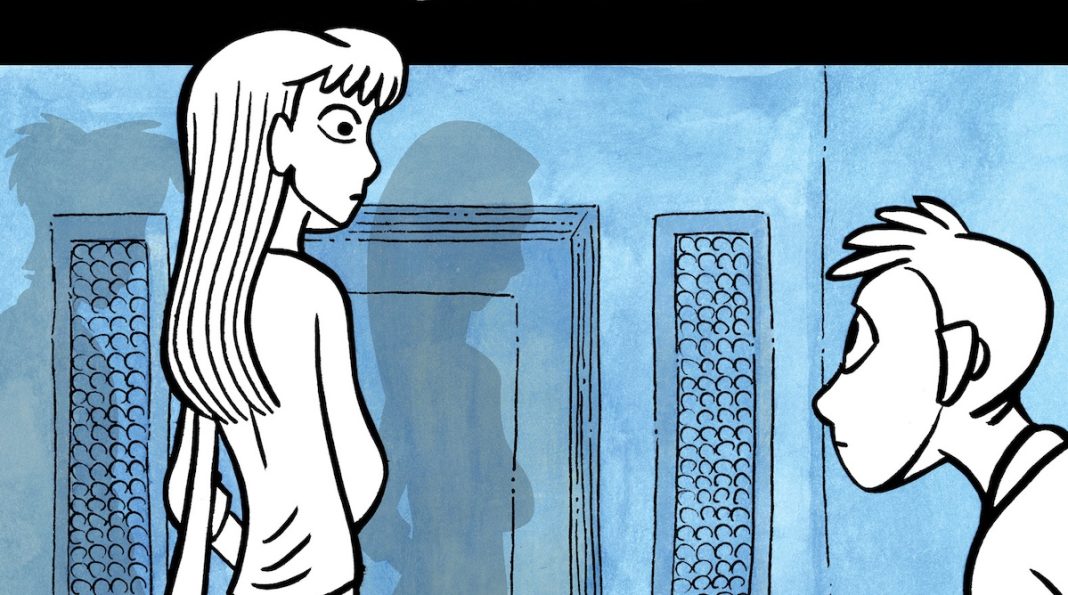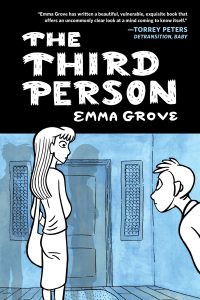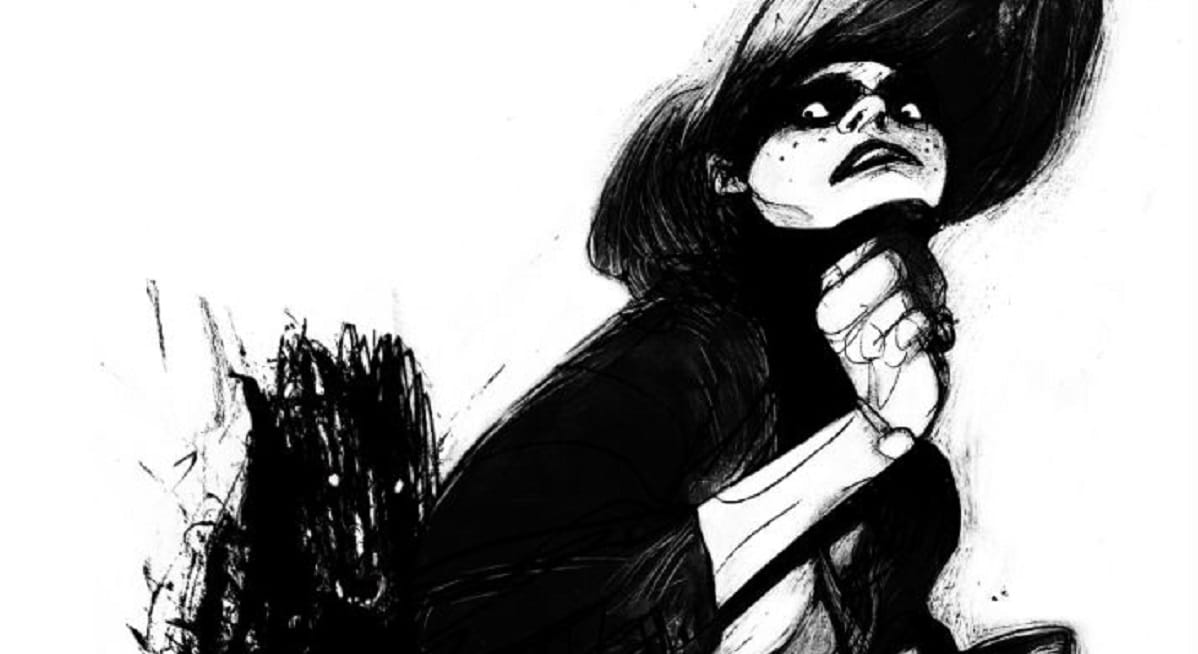 The Third Person
The Third Person
Cartoonist: Emma Grove
Publisher: Drawn & Quarterly
The Third Person by Emma Grove earned a place on The Beat’s Best Comics of 2022 through its combination of impressive technique as well as the singular nature of its themes and subject matter, both of which are arguably unique to the medium of sequential graphic narrative.
Published by Drawn & Quarterly in May 2022, the nonfiction memoir examines Grove’s personal experience gaining access to gender affirming transition care. This intersects with the fact that she has Dissociative Identity Disorder (DID), and is further complicated by the deeply flawed treatment administered by Toby the therapist.
From Charlie Brown to Katina
The first thing you’re likely to notice about The Third Person is its size. At over 900 pages, this graphic novel takes advantage of its size by including a trio of panels from the text (referencing the creation of the book itself). These panels connect thematically to the book’s introduction, easing prospective readers into its voluminous pages.
Yet in spite of the numerous nature of the panels, Grove’s cartooning is characterized in part by its minimalism. In an interview conducted for Prism Comics, Grove stated that her “biggest inspiration for doing a book that was this thick was actually Charles Schulz.”
She explained that Schulz not only produced an incredible volume of work, rarely taking a vacation from daily cartooning. However, she also drew inspiration from the “graphic simplicity” of his work.
“He never included anything in those panels that didn’t absolutely need to be there,” said Grove. “For example, if Charlie Brown and Sally were walking outside, he would show a tuft of grass, a few leaves on the ground, and a tree. That was all he needed to know that there were outside, and they were wearing their jackets.”
It is through this visual alchemy that Grove is able to so effectively convey her experiences. Over the course of the longest segment of the narrative, which predominantly takes place in Toby’s office, the background is generally reduced to the therapist’s couch, chair, and occasionally, the side table. This both establishes the sense of place for the scene, conveying the necessary information to understand the setting, while simultaneously allowing the focus of the panels to lie with the characters, and their expressive facial reactions as they engage in painstakingly-recreated dialogue.
These carefully reconstructed memories form the backbone of The Third Person. It is unlikely that any other medium could have conveyed this tale so effectively. The complicated narrative must be understood as the sum of its many moving parts, making the temporal constraints of most on-screen mediums a nonstarter.
Furthermore, the visual elements are necessary to understanding how the scenes are playing out, so the less-visual medium prose wouldn’t pass muster, either. Like Flung Out of Space, this is a tale that could only be told through sequential graphic narrative.
The Others
It has been established that The Third Person is a story that could only be told through the medium of comics. However, it must also be remarked that the river flows both ways: this is a story that is important to be told.
Grove’s perspective – which sits at the intersection of being a transgender woman, having DID, and living in the United States in the early 21st century – is one that must be heard. Furthermore, it’s unlikely to be a perspective with which you are familiar – the perspective of “the other.”
Comics are uniquely suited in their allowance for a single individual to create a sequential graphic narrative; so many other visual mediums are, by default, collaborative. While this collaboration should indeed be celebrated, there also must be a place for singular perspectives to control the narrative from start to finish, as Grove does here.
And of course, Grove’s technical prowess is key in allowing her to achieve this goal as thoroughly as she does here. Drawing on her immediately apparent animation experience allows her to convey scene after scene with smooth, thoughtful motion, keeping the story moving along as the weight of the book shifts from your right hand to your left.
The Third Person
The Third Person is an achievement, and one that could only be accomplished in comics. While we are trained to believe anything that isn’t reduced to a few digestible sentences isn’t worth our attention, this graphic novel proves that the details can be necessary in order to see the whole picture.
The Third Person is available now from Drawn & Quarterly.
Check The Beat’s review section for a new graphic novel review every Friday in 2023! And make sure to read TRADE RATING each Thursday for a review of collected material!



 The Third Person
The Third Person



